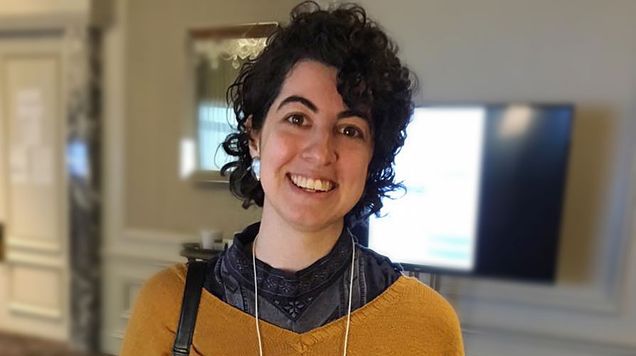Impaired Hearing Function Underlies Hyperfunctional Voice Disorders
Researchers at Boston University and Boston Medical Center discover that patients with hyperfunctional voice disorders not only have changes to laryngeal motor patterns, but also disrupted ability to integrate auditory information.
by Gina Matinca from the Rafik B. Hariri Institute for Computing and Computational Science & Engineering.
A singer’s instrument is their voice, but their musical career increases their risk for developing a disorder that can destroy their instrument. Hyperfunctional voice disorders (HVDs) are the most common clinical diagnoses in patients with voice impairments and are highly prevalent among singers and other people that use their voice often, like teachers. They occur when the muscles in the larynx get stuck in a pattern of working too hard, such that patients exhibit strained speech, fatigue, pain, or a complete loss of voice. Although increased voice use is linked to HVDs, no one really knows the underlying cause for why these muscle patterns develop in some people but not others, undermining the efficacy of treatment plans.

A team of researchers from Boston University and Boston Medical Center, including Hariri Institute Graduate Student Fellow Defne Abur, a PhD candidate in the Department of Speech, Language & Hearing Sciences at BU College of Health & Rehabilitation Sciences: Sargent College and Research Fellow Cara Stepp, a Professor at Sargent College, discovered that patients’ with HVDs show differences in the way they process what they hear. The research, published today in Scientific Reports, provides comprehensive and convincing evidence that sensory impairments are associated with disruptions to patients’ voice control.
The idea that a patient’s hearing function could be the root cause of their vocal disorder results from the known link between what people hear and what they say. “Auditory feedback is used during typical speech to monitor what we are saying and ensure it matches what we expect to say,” said Abur. When people hear something that doesn’t match what they expect, speakers respond by correcting for whatever error they identified. “This process is called auditory-motor integration and reflects our ability to monitor and correct for speech errors,” said Abur.
Abur and colleagues wanted to test whether the laryngeal muscle tension in patients with HVDs results from abnormal auditory-motor integration. “Clarifying the mechanisms underlying HVDs is crucial, since our voice is a strong part of our identity and a loss of vocal function can interfere with our social life, job performance, and overall communication,” said Stepp.
The team recruited 124 participants aged 18-69 years old for their study, including 62 patients with HVDs. About half of the participants in each group were singers.

The researchers first examined whether participants could distinguish between their normal voice and their voice played back at a higher or lower pitch to test the auditory discrimination of patients with HVDs. Abur and colleagues found that though singers were better at identifying pitch differences, all patients with HVDs struggled to detect differences in the pitch of their own voice. This aligned with the researchers’ predictions that patients with HVDs have difficulty detecting changes in their own voice.
Next, the team tested how participants might alter their voice in response to suddenly hearing themselves speak with a large difference in pitch. Typically, when someone hears their own voice quickly played back at a noticeably higher pitch, they will immediately shift their pitch slightly lower and vice versa, like a reflex. The researchers found that patients with HVDs could make these short-term pitch corrections to sudden changes they heard in their voice and did just as well as participants without HVDs.
But when patients with HVDs heard themselves at a different pitch that changed very gradually, in small increments over a sustained period of time, they altered their voice in an atypical way. Most speakers will slowly change their pitch to adapt when they hear their voice changing over time. Abur and colleagues found that individuals with HVDs either overcorrected their pitch, didn’t respond at all, or moved their pitch in the same direction as the shifted playback during this longer, adaptive task. “These atypical adaptive responses represent a disruption in the auditory-motor integration process that is responsible for monitoring and correcting for speech errors,” said Abur. This suggests that patients with HVDs cannot integrate auditory information long-term in a way that allows for them to control their laryngeal muscles and correct their pitch.
The researchers also found that worse auditory discrimination was associated with atypical adaptive responses among patients with HVDs, further supporting the idea that disrupted hearing function might be a contributor to developing HVDs. “With increased understanding of the mechanisms involved in HVDs, treatment studies can be designed to make more targeted therapy options and improve quality of life for this highly prevalent voice disorder,” said Stepp.
This work was supported by grant P50 DC015446, T32 DC013017, and F31 DC019032 from the National Institute of Deafness and Other Communication Disorders, an ASHFoundation New Century Doctoral Scholarship, and a Graduate Student Fellowship from the Rafik B. Hariri Institute for Computing and Computational Science and Engineering.